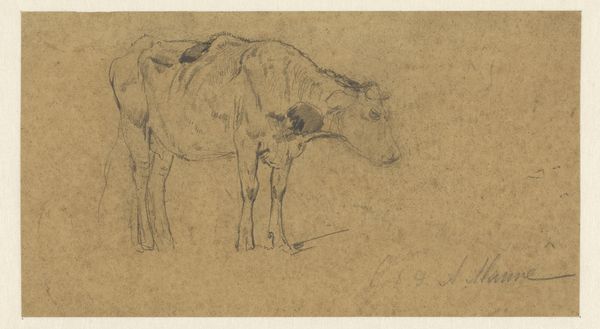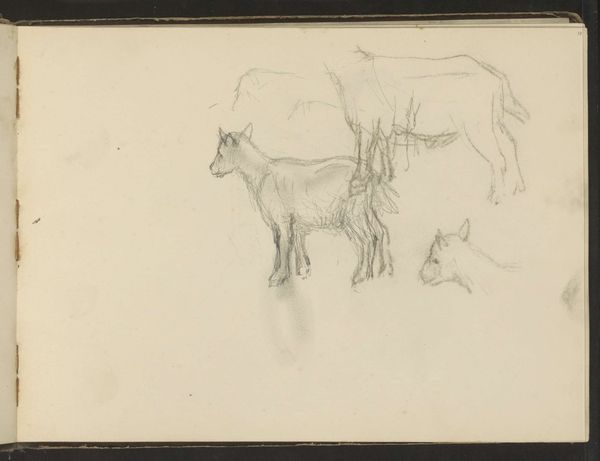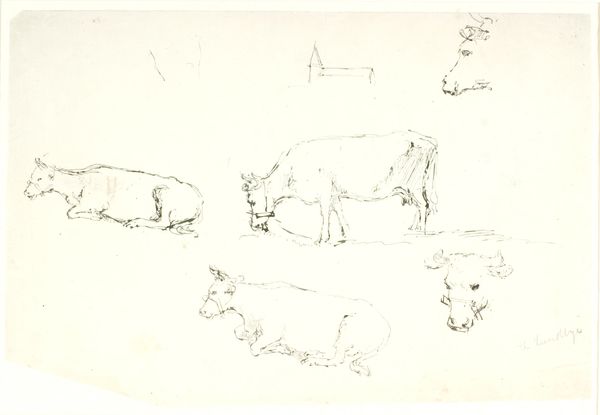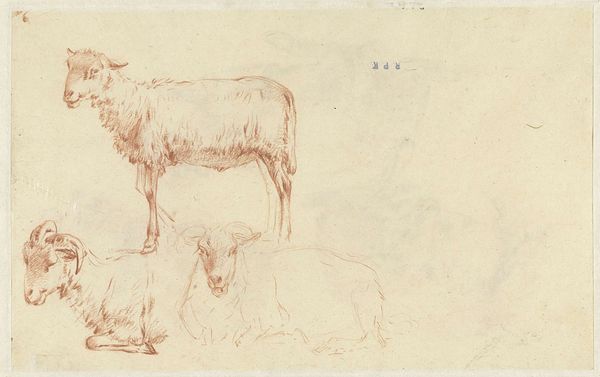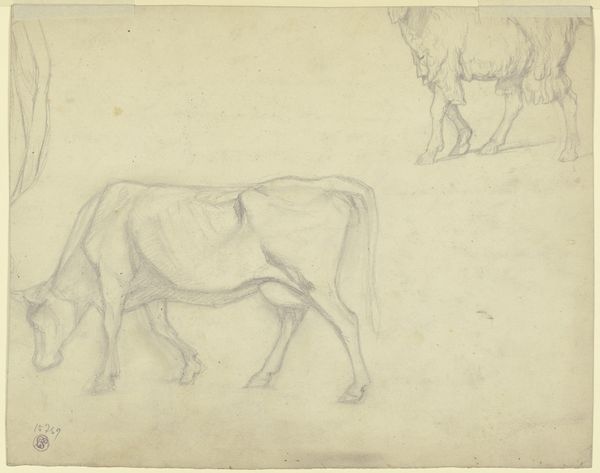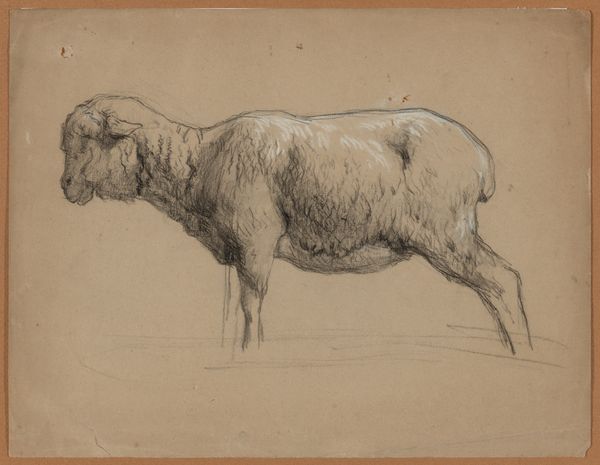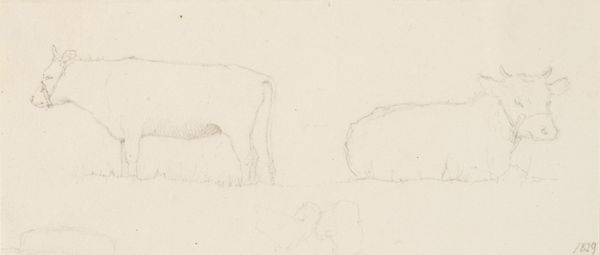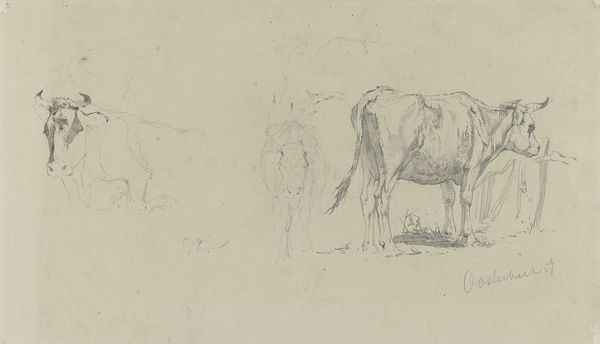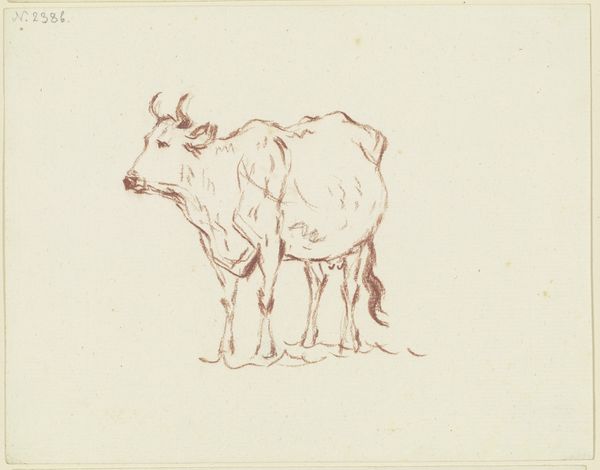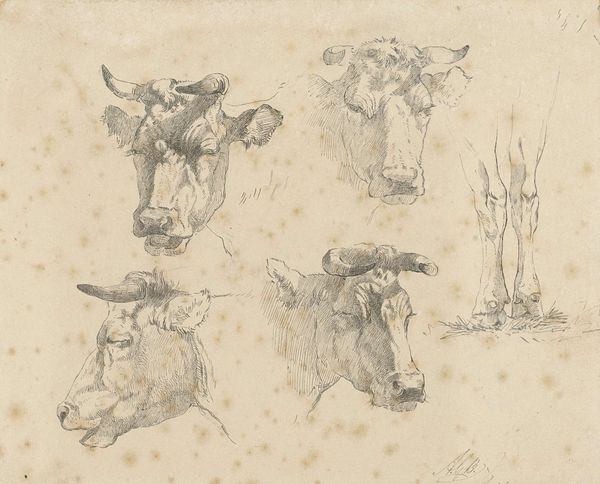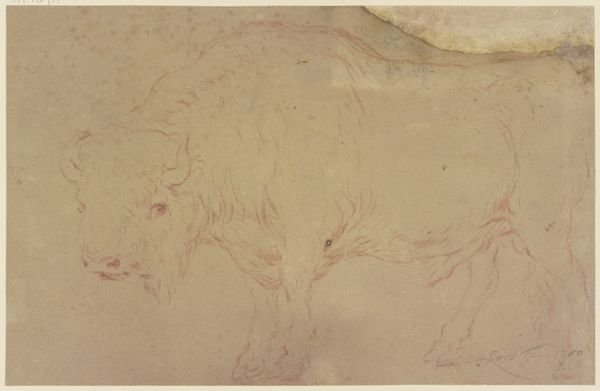
drawing, paper, pencil
#
drawing
#
16_19th-century
#
landscape
#
figuration
#
paper
#
romanticism
#
pencil
#
realism
Copyright: Public Domain
Editor: Here we have Johann Nepomuk Rauch's "A Buffalo," a pencil drawing on paper from around 1845. It strikes me as a very straightforward, almost documentary depiction of the animal. What layers do you see within this piece? Curator: Straightforward, yes, but within its simplicity lies a complex narrative about power and representation. This buffalo isn’t just an animal; it’s a symbol caught in the crosshairs of Manifest Destiny and westward expansion. Think about the context: Rauch, a European artist, sketching an American icon during a period of immense ecological and cultural upheaval. Editor: So, it’s about more than just realism; it’s about colonialism, perhaps? Curator: Absolutely. Consider how images like this were used to define and therefore control the American West. This drawing would have circulated within a specific European audience, shaping their understanding—and often misunderstanding—of this land and its inhabitants, both human and animal. Editor: The buffalo almost seems… vulnerable, standing there alone. Was that intentional? Curator: It's difficult to know Rauch’s exact intentions, but we can analyze the impact. By portraying the buffalo in this isolated way, he inadvertently highlights its fragility amidst the rapid destruction of its habitat and the systematic displacement of Indigenous peoples who depended on it. The drawing becomes a quiet indictment. What do you think the absence of landscape does to this piece? Editor: Good point. Without the landscape, it emphasizes the animal as a specimen, removed from its context, making it easier to objectify. I didn't think about it like that. Thanks. Curator: Precisely. And thinking critically about these power dynamics allows us to move beyond mere aesthetic appreciation and engage with the urgent questions this drawing subtly raises about environmental ethics, cultural appropriation, and the enduring legacies of colonialism.
Comments
No comments
Be the first to comment and join the conversation on the ultimate creative platform.
